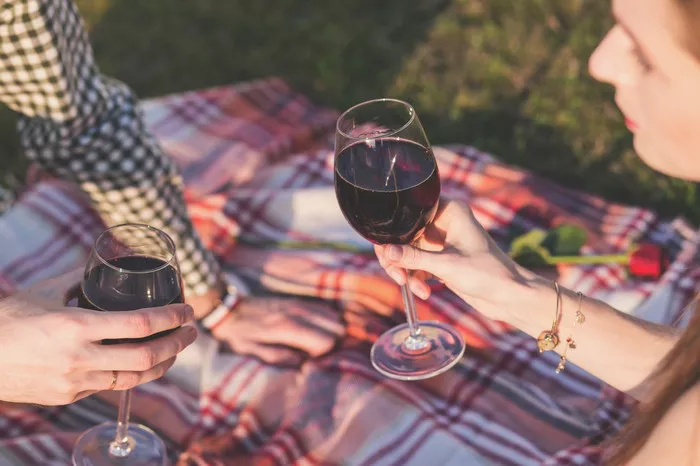Sancerre, a renowned wine region in the Loire Valley of France, is celebrated for its crisp and elegant white wines. Central to the allure of Sancerre wines is the grape variety that forms their foundation. The Sauvignon Blanc grape takes center stage, contributing its distinctive characteristics to create wines that capture the essence of the terroir and captivate palates worldwide. In this article, we delve into the world of Sancerre wines, uncovering the Sauvignon Blanc grape’s role in shaping these exceptional and sought-after creations.
Understanding Sancerre
Nestled in the eastern part of the Loire Valley, Sancerre is a picturesque wine region known for its undulating hills, chalky soils, and a climate that fosters the cultivation of high-quality grapes. While Sancerre produces both white and red wines, it is the white wines that have gained international acclaim for their vibrant acidity, mineral notes, and expressions of the land’s unique characteristics.
Sauvignon Blanc: The Grape of Sancerre
The grape variety that serves as the backbone of Sancerre’s white wines is none other than Sauvignon Blanc. This grape is renowned for its aromatic qualities, often described as herbaceous, citrusy, and sometimes even grassy. It’s these distinct aromas and flavors that make Sauvignon Blanc a favorite among wine enthusiasts, as it offers a refreshing and crisp profile that is both distinctive and versatile.
Sancerre’s Unique Terroir
Sancerre’s terroir plays a pivotal role in shaping the character of its wines. The combination of chalky limestone soils, known as “terres blanches,” and the region’s semi-continental climate contributes to the specific expression of the Sauvignon Blanc grape. The soils provide excellent drainage, forcing the vines to dig deep for nutrients and resulting in wines with pronounced minerality.
The Taste of Sancerre Wines
Sancerre wines crafted from the Sauvignon Blanc grape offer a sensory journey that reflects the region’s terroir and the grape’s inherent attributes:
Aromatic Elegance: Sauvignon Blanc grapes cultivated in Sancerre are known for their aromatic intensity. The wines often exude aromas of freshly cut grass, citrus fruits like grapefruit and lime, and occasionally tropical notes.
Vibrant Acidity: One of the hallmarks of Sancerre wines is their vibrant acidity, which lends a refreshing and lively character to the palate. This acidity balances the fruitiness of the wine and contributes to its excellent aging potential.
Mineral Complexity: Sancerre’s chalky soils infuse the wines with a distinctive mineral quality. This mineral complexity adds layers of depth to the flavor profile, enhancing the overall tasting experience.
Food-Friendly: The bright acidity and complex flavors of Sancerre wines make them incredibly food-friendly. They pair well with a wide range of dishes, from seafood and salads to goat cheese and poultry.
Crafting Sancerre Wines: The Winemaking Process
The journey from grape to glass involves a meticulous winemaking process that respects the grapes’ natural attributes while capturing the essence of the terroir:
Harvesting: The Sauvignon Blanc grapes are carefully harvested by hand to ensure that only the best-quality grapes make their way into the winery.
Pressing: After harvesting, the grapes are gently pressed to extract the juice. This juice is the starting point for the winemaking process.
Fermentation: The extracted juice undergoes fermentation, during which yeast converts the sugars into alcohol. The winemaker’s choices regarding yeast strains and fermentation vessels can influence the wine’s final flavor profile.
Maturation: Sancerre wines often undergo maturation on the lees, which are the spent yeast cells. This process imparts additional flavors, textures, and complexities to the wine.
Bottling: After maturation, the wine is carefully filtered and bottled. Some Sancerre wines are meant to be enjoyed young to capture their fresh and vibrant characteristics, while others have the potential to age gracefully, developing more intricate flavors over time.
Sancerre Beyond Sauvignon Blanc
While Sauvignon Blanc is the predominant grape variety used in Sancerre’s white wines, it’s worth noting that the region also produces red and rosé wines. These wines are crafted using Pinot Noir grapes, and they offer a different expression of the terroir. Sancerre red wines are known for their light to medium body, delicate red fruit aromas, and elegant structure. Sancerre rosé wines, on the other hand, exhibit refreshing acidity and bright berry flavors, making them delightful companions for warm weather.
Pairing Sancerre Wines
The versatile nature of Sancerre wines, particularly those made from Sauvignon Blanc, makes them ideal companions for various culinary experiences. Consider these pairing suggestions:
Seafood Delights: The crisp acidity and mineral notes of Sancerre wines complement seafood dishes like oysters, shrimp, and grilled fish.
Fresh Salads: Sancerre’s herbaceous and citrusy aromas work well with salads featuring vinaigrette dressings and ingredients like goat cheese, arugula, and citrus fruits.
Goat Cheese: The acidity in Sancerre wines cuts through the creaminess of goat cheese, creating a harmonious and delightful pairing.
Light Poultry Dishes: Sancerre’s elegance and acidity enhance the flavors of dishes like roasted chicken or turkey.
Asparagus and Artichokes: These notoriously tricky-to-pair vegetables find a worthy match in Sancerre wines due to their herbal and vegetal qualities.
In Conclusion
Sauvignon Blanc, the grape of Sancerre, weaves a tale of elegance, aromatics, and a profound connection to the region’s terroir. The wines crafted from this grape variety embody the essence of Sancerre, reflecting the unique combination of chalky soils, climate, and winemaking expertise. From the aromatic allure to the vibrant acidity and mineral complexity, Sancerre wines captivate palates and offer a journey into the heart of this celebrated wine region. Whether enjoyed on their own or paired with culinary delights, Sancerre wines stand as a testament to the harmonious marriage of the Sauvignon Blanc grape and the Loire Valley’s exquisite terroir.


